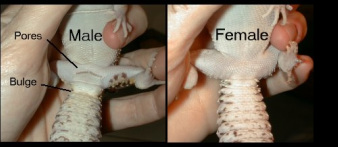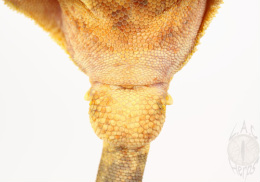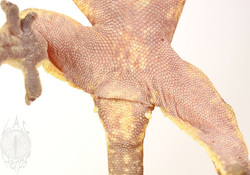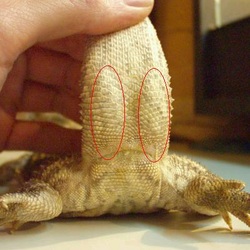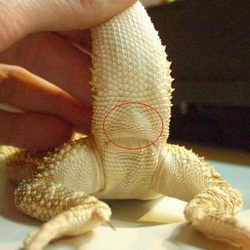Beginner leopard gecko care
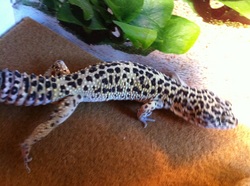
Diet
A leopard geckos diet must consist of protein, vitamins, and calcium. A leopard geckos main food source should be crickets. They contain mostly protein, and most leopard geckos love them. They should be dusted in insect dusting calcium, this way your leopard gecko gets calcium the same time it eats crickets. Another important food in a leopard geckos diet is meal worms which contain less protein. You can also feed pinky mice, wax worms, and roaches but only as a treat don't feed these constantly, maybe once a month. Also What ever you feed your leopard geckos the food can be no bigger then the distance of the leopard geckos eyes.
Housing/cage decor
An adult leopard gecko should live in a 10 gallon minimum. The tank should be decorated in the style of the desert because thats where it comes from the wild. Leopard geckos love to explore at night so anything less then a 10 gallon is to small. You will also need at least 3 hides which should be spread around the tank. 1 hide should be on the warmer side of the tank (over the heat mat with the lamp you use over it). Then you need a moist hide place this somewhere in the middle of your tank (between the hot and cold sides, this gives it perfect humidity so your leopard geckos can shed easier).Finally you will need to put a hide on the cold side of your tank approximately opposite to the hide on the hot side.
Heating/lighting
Leopard geckos come from hot-humid places like deserts in Southern Asia, Pakistan, and Northwest India. This mean you must keep your your leopard geckos warm, so you will need a few things. First you will need a heat mat, you can get many sizes of heat mats from Zoo-Med. A heat mat should be placed on 1 side of the talk and should take up to a 1/4 of the tank and should be kept on at all time! Next you will need a heat lamp, heat lamps are used/substituted for sunlight. make sure its wattage isn't to high a 60 watt - 100 watt is plenty for an adult leopard gecko. The heat lamp should be placed at the hot side of the tank and should only be on at day time, remember leopard geckos are nocturnal so they love coming out at night. Do not use bulbs that have extreme colours because it will harm them.
Substrate
To keep your leopard gecko healthy and clean you need a substrate. NEVER use sand! Sand contains calcium and leopard geckos love to like calcium this leads to undigested sand to DEATH! Recommended substrate: Repti-carpet, paper towels, coconut fibre. Repti-carpet is a carpet like substrate, it comes in a role, you can either get it in a tan colour or a green colour, both is good. Other substrate: tile, newspaper, rocks, and many more!
Sexing
You will have to wait til the Gecko is old enough, over 6 months at least to really be sure. Juvenile male Leopard Geckos look very much like females. The left photo is an adult male Leopard Gecko. You can see that the bulge behind the vent is quite noticeable. That is where the hemipenes are located. You can also readily see the row of femoral pores shaped like a "V" in front of the vent. The right is the female leopard gecko as you can see she has neither the bulge or a noticeable row of pores. There is a row there but it is not noticeable.
A leopard geckos diet must consist of protein, vitamins, and calcium. A leopard geckos main food source should be crickets. They contain mostly protein, and most leopard geckos love them. They should be dusted in insect dusting calcium, this way your leopard gecko gets calcium the same time it eats crickets. Another important food in a leopard geckos diet is meal worms which contain less protein. You can also feed pinky mice, wax worms, and roaches but only as a treat don't feed these constantly, maybe once a month. Also What ever you feed your leopard geckos the food can be no bigger then the distance of the leopard geckos eyes.
Housing/cage decor
An adult leopard gecko should live in a 10 gallon minimum. The tank should be decorated in the style of the desert because thats where it comes from the wild. Leopard geckos love to explore at night so anything less then a 10 gallon is to small. You will also need at least 3 hides which should be spread around the tank. 1 hide should be on the warmer side of the tank (over the heat mat with the lamp you use over it). Then you need a moist hide place this somewhere in the middle of your tank (between the hot and cold sides, this gives it perfect humidity so your leopard geckos can shed easier).Finally you will need to put a hide on the cold side of your tank approximately opposite to the hide on the hot side.
Heating/lighting
Leopard geckos come from hot-humid places like deserts in Southern Asia, Pakistan, and Northwest India. This mean you must keep your your leopard geckos warm, so you will need a few things. First you will need a heat mat, you can get many sizes of heat mats from Zoo-Med. A heat mat should be placed on 1 side of the talk and should take up to a 1/4 of the tank and should be kept on at all time! Next you will need a heat lamp, heat lamps are used/substituted for sunlight. make sure its wattage isn't to high a 60 watt - 100 watt is plenty for an adult leopard gecko. The heat lamp should be placed at the hot side of the tank and should only be on at day time, remember leopard geckos are nocturnal so they love coming out at night. Do not use bulbs that have extreme colours because it will harm them.
Substrate
To keep your leopard gecko healthy and clean you need a substrate. NEVER use sand! Sand contains calcium and leopard geckos love to like calcium this leads to undigested sand to DEATH! Recommended substrate: Repti-carpet, paper towels, coconut fibre. Repti-carpet is a carpet like substrate, it comes in a role, you can either get it in a tan colour or a green colour, both is good. Other substrate: tile, newspaper, rocks, and many more!
Sexing
You will have to wait til the Gecko is old enough, over 6 months at least to really be sure. Juvenile male Leopard Geckos look very much like females. The left photo is an adult male Leopard Gecko. You can see that the bulge behind the vent is quite noticeable. That is where the hemipenes are located. You can also readily see the row of femoral pores shaped like a "V" in front of the vent. The right is the female leopard gecko as you can see she has neither the bulge or a noticeable row of pores. There is a row there but it is not noticeable.
Beginner Crested gecko care
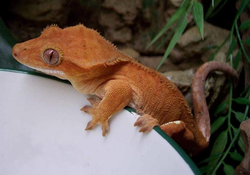
Diet
Like the leopard gecko the crested gecko must contain protein, vitamins, and minerals. The most popular food for crested geckos is the T-Rex sand fire range crested gecko diet, It is powder mixed with water to create the full crested gecko diet. But most crested geckos grow quicker when fed live food. The live foods include: crickets, locusts, wax worms, meal worms, etc.
Housing/hides
The crested gecko is probably one of the easiest geckos to house, this is because crested geckos are a arboreal gecko meaning in the wild they live up in the trees. An adult crested gecko can live in a 45cm cubed terrarium, these measurements are also good for using vivariums. Vivariums are also sometimes thought to be better to house crested geckos because they retain the humidity a lot better. In your vivarium or terrarium you will need at least one hide and a lot of fake/live plants.
Heating/lighting
Again heating the crested geckos is very simple in most house's you don't need much more then a heat lamp and a heat mat. During the day crested geckos need to be kept at around 70 F and can go down to 65 f at night. Crested geckos just need a small light on during the day.
Substrate
Like leopard geckos never use sand! Sand contains calcium and leopard geckos love to like calcium this leads to undigested sand to DEATH! Recommended substrate: Repti-carpet, paper towels, coconut fibre. Repti-carpet is a carpet like substrate, it comes in a role, you can either get it in a tan colour or a green colour, both is good. Other substrate: tile, newspaper, rocks, and many more!
Sexing
To sex a crested gecko it needs to be at least 6 months old (unless there is a definite bulge). First, a 45 gram male with an obvious bulge at the base of the tail. The bulge contains what is called the hemipenis.Males have pre-anal pores located on the undersides of the legs. The hemipenal bulge in male crested geckos generally starts to become apparent between 10-15 grams, pre-anal pores will be absent on female crested geckos.
Like the leopard gecko the crested gecko must contain protein, vitamins, and minerals. The most popular food for crested geckos is the T-Rex sand fire range crested gecko diet, It is powder mixed with water to create the full crested gecko diet. But most crested geckos grow quicker when fed live food. The live foods include: crickets, locusts, wax worms, meal worms, etc.
Housing/hides
The crested gecko is probably one of the easiest geckos to house, this is because crested geckos are a arboreal gecko meaning in the wild they live up in the trees. An adult crested gecko can live in a 45cm cubed terrarium, these measurements are also good for using vivariums. Vivariums are also sometimes thought to be better to house crested geckos because they retain the humidity a lot better. In your vivarium or terrarium you will need at least one hide and a lot of fake/live plants.
Heating/lighting
Again heating the crested geckos is very simple in most house's you don't need much more then a heat lamp and a heat mat. During the day crested geckos need to be kept at around 70 F and can go down to 65 f at night. Crested geckos just need a small light on during the day.
Substrate
Like leopard geckos never use sand! Sand contains calcium and leopard geckos love to like calcium this leads to undigested sand to DEATH! Recommended substrate: Repti-carpet, paper towels, coconut fibre. Repti-carpet is a carpet like substrate, it comes in a role, you can either get it in a tan colour or a green colour, both is good. Other substrate: tile, newspaper, rocks, and many more!
Sexing
To sex a crested gecko it needs to be at least 6 months old (unless there is a definite bulge). First, a 45 gram male with an obvious bulge at the base of the tail. The bulge contains what is called the hemipenis.Males have pre-anal pores located on the undersides of the legs. The hemipenal bulge in male crested geckos generally starts to become apparent between 10-15 grams, pre-anal pores will be absent on female crested geckos.
Beginner Bearded dragon care
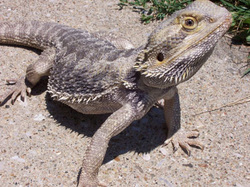
Diet
Bearded dragons eat a lot and can eat a wide variety of food, both live prey and fruit & vegetables. For your dragons health you need to know what they can and cannot eat, and what supplements on the market are required to keep and fit and healthy dragon. Never leave live prey in the enclosure over night! They may cause harm to your dragon by biting the lizard's skin during the night. A bearded dragon will eat the following live food, crickets, locust, roaches, silkworms, wax worms, super worms, tomato/goliath worm . A adult bearded dragon will eat the fruit and vegetables, Collard Greens, Dandelion Greens, Endive, Escarole, Mustard Greens, Turnip Greens, Acorn Squash, Butternut Squash, Hubbard Squash, Green Beans, Peas, Parsnips ,Turnips, Scallop Squash, Spaghetti Squash, Summer Squash, Sweet potato, Figs, Mango, Papaya, Raspberries, Silkworm, Cactus Pad/Leaf. Feed occasionally: Arugula, Bok Choy, Kale, Bell Peppers - red & green, Bell Peppers yellow, Celery, Cucumbers ,Okra, Potato, russet, Pumpkin, raw Radish, Watercress, Yams, raw Zucchini, raw & peeled Apples, Apricots, Blackberries, Blueberries, Cantaloupe, Cherries, Cranberries, Grapefruit, Grapes, Guava, Honeydew, Kiwi, Nectarines, Orange, naval, Orange, mandarin, Peaches, Pear (not Asian), Pineapple, fresh Plums, Prunes, seedless, Strawberries, Watermelon, Butterworms, Silkworms, Superworms, Waxworms, Basil,Beans, garbanzo beans, kidney beans, lima beans, pinto, Cilantro, Peppermint leaves, Spearmint, Wheat grass. Rarely: Broccoli, Brussel sprouts, Carrots, Cauliflower, Green peas raw, Rutabaga raw, Tomatoes, Pomegranate, Star fruit, Bananas, Rice brown long grain, Soybeans.Never feed your dragon a firefly or bee it will kill it within a matter of minutes. The following should also be avoided because they contain oxalic acid which can be toxic to your bearded dragons: cabbage, corn, iceberg lettuce, spinach, avocado, eggplant, mushrooms, rhubarb, chicken, ground beef, pork chops, spaghetti. Calcium dust is a must and should be sprinkled on your beardie's food 1 to 2 times a week. This will help prevent vitamin deficiencies and combat brittle bones.
Heating/lighting
It is very important a bearded dragon has its proper lighting. You need a special heat light for your lizard, without this, they can't manufacture vitamin D3 which is essential for calcium metabolism. In addition to the heat light, it will also need a bright daylight bulb. You should provide 14 hours of bright light minimum in the day time and 10 hours of darkness. Your bearded dragon needs a temperature gradient in his enclosure. One side should be between 75-85 degrees Fahrenheit, while the other should be 95-100 degrees Fahrenheit. At night, the temperature should drop into low 70s. The basking area should be between 100 and 105 degrees Fahrenheit.
Housing/hides
Until your beardie is six months old do not put sand it in the vivarium - as he eats he will pick up grains of sand, and these can cause impaction in his stomach and he may die. Paper towels are the best flooring for a young beardie - they can be changed regularly, so you can keep the viv nice and clean. Some people never use sand, but use tiles or vinyl instead. When it is old enough for sand use Play Sand, as this is very fine. Do not be tempted to buy the special Calcium Sand as this clumps together when wet, and would cause impaction if swallowed. Bearded dragons need a place to hide, such as a cave. This is important so that your dragon can hide if they feel stressed or threatened.
Sexing
There are a few methods to determine the sex of your bearded dragon. The simplest method is to invade their privacy and just look. On the underside of their tail, just above the vent, there is typically either a single bulge (or none) or two separated bulges. If you see two clearly separate bulges, in the upper image, you have a male. If you see only one, you probably have a female. There is uncertainty with a single bulge, particularly if there isn't much of one. When beardies are young, they all look like females, but develop clearer signs of gender as they get older.The best way to hold your dragon when making this check is to place your dragon in one hand, perpendicular to your fingers, and facing away from you. Place your thumb over the back to hold them in place. With your other hand lift the tail up to approximately 90 degrees. Be gentle!!! You don't want to hurt your bearded dragon.
Bearded dragons eat a lot and can eat a wide variety of food, both live prey and fruit & vegetables. For your dragons health you need to know what they can and cannot eat, and what supplements on the market are required to keep and fit and healthy dragon. Never leave live prey in the enclosure over night! They may cause harm to your dragon by biting the lizard's skin during the night. A bearded dragon will eat the following live food, crickets, locust, roaches, silkworms, wax worms, super worms, tomato/goliath worm . A adult bearded dragon will eat the fruit and vegetables, Collard Greens, Dandelion Greens, Endive, Escarole, Mustard Greens, Turnip Greens, Acorn Squash, Butternut Squash, Hubbard Squash, Green Beans, Peas, Parsnips ,Turnips, Scallop Squash, Spaghetti Squash, Summer Squash, Sweet potato, Figs, Mango, Papaya, Raspberries, Silkworm, Cactus Pad/Leaf. Feed occasionally: Arugula, Bok Choy, Kale, Bell Peppers - red & green, Bell Peppers yellow, Celery, Cucumbers ,Okra, Potato, russet, Pumpkin, raw Radish, Watercress, Yams, raw Zucchini, raw & peeled Apples, Apricots, Blackberries, Blueberries, Cantaloupe, Cherries, Cranberries, Grapefruit, Grapes, Guava, Honeydew, Kiwi, Nectarines, Orange, naval, Orange, mandarin, Peaches, Pear (not Asian), Pineapple, fresh Plums, Prunes, seedless, Strawberries, Watermelon, Butterworms, Silkworms, Superworms, Waxworms, Basil,Beans, garbanzo beans, kidney beans, lima beans, pinto, Cilantro, Peppermint leaves, Spearmint, Wheat grass. Rarely: Broccoli, Brussel sprouts, Carrots, Cauliflower, Green peas raw, Rutabaga raw, Tomatoes, Pomegranate, Star fruit, Bananas, Rice brown long grain, Soybeans.Never feed your dragon a firefly or bee it will kill it within a matter of minutes. The following should also be avoided because they contain oxalic acid which can be toxic to your bearded dragons: cabbage, corn, iceberg lettuce, spinach, avocado, eggplant, mushrooms, rhubarb, chicken, ground beef, pork chops, spaghetti. Calcium dust is a must and should be sprinkled on your beardie's food 1 to 2 times a week. This will help prevent vitamin deficiencies and combat brittle bones.
Heating/lighting
It is very important a bearded dragon has its proper lighting. You need a special heat light for your lizard, without this, they can't manufacture vitamin D3 which is essential for calcium metabolism. In addition to the heat light, it will also need a bright daylight bulb. You should provide 14 hours of bright light minimum in the day time and 10 hours of darkness. Your bearded dragon needs a temperature gradient in his enclosure. One side should be between 75-85 degrees Fahrenheit, while the other should be 95-100 degrees Fahrenheit. At night, the temperature should drop into low 70s. The basking area should be between 100 and 105 degrees Fahrenheit.
Housing/hides
Until your beardie is six months old do not put sand it in the vivarium - as he eats he will pick up grains of sand, and these can cause impaction in his stomach and he may die. Paper towels are the best flooring for a young beardie - they can be changed regularly, so you can keep the viv nice and clean. Some people never use sand, but use tiles or vinyl instead. When it is old enough for sand use Play Sand, as this is very fine. Do not be tempted to buy the special Calcium Sand as this clumps together when wet, and would cause impaction if swallowed. Bearded dragons need a place to hide, such as a cave. This is important so that your dragon can hide if they feel stressed or threatened.
Sexing
There are a few methods to determine the sex of your bearded dragon. The simplest method is to invade their privacy and just look. On the underside of their tail, just above the vent, there is typically either a single bulge (or none) or two separated bulges. If you see two clearly separate bulges, in the upper image, you have a male. If you see only one, you probably have a female. There is uncertainty with a single bulge, particularly if there isn't much of one. When beardies are young, they all look like females, but develop clearer signs of gender as they get older.The best way to hold your dragon when making this check is to place your dragon in one hand, perpendicular to your fingers, and facing away from you. Place your thumb over the back to hold them in place. With your other hand lift the tail up to approximately 90 degrees. Be gentle!!! You don't want to hurt your bearded dragon.
